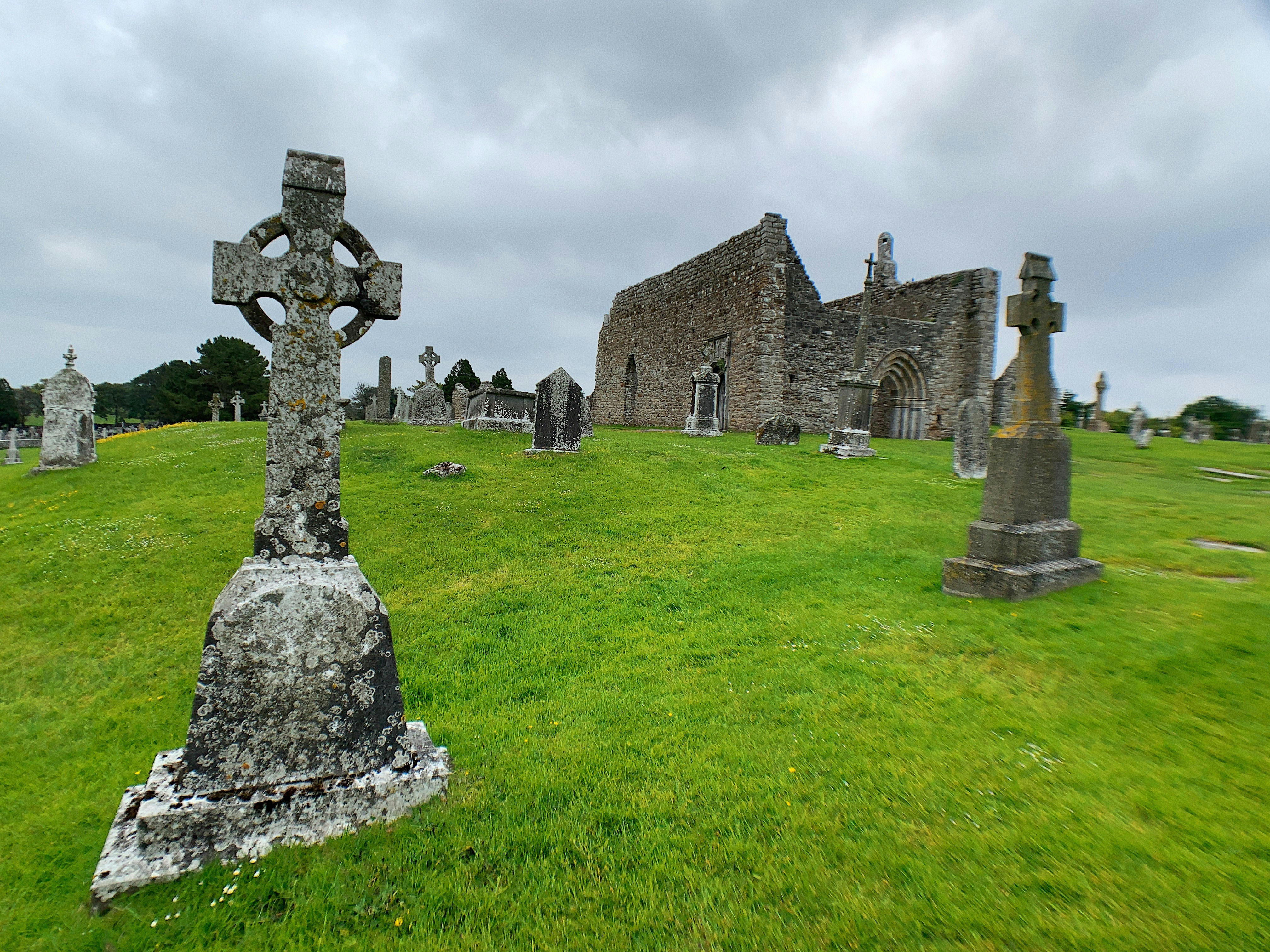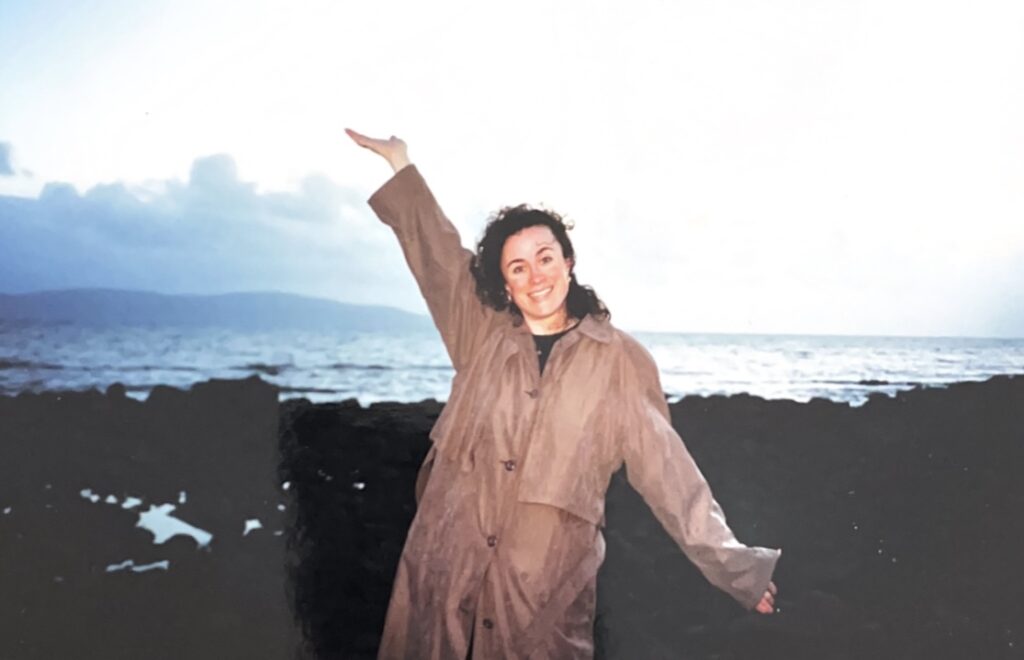
My Irish-born great-grandparents left for America in search of a better life. Mostly, they found just as harsh an environment. In Ireland, they were mistreated, suffered from discrimination and hunger, and fled.
In America, my Irish ancestors were also mistreated and suffered from discrimination. However, they settled here for us. So that we might thrive.
I’m forever grateful for their sacrifices.
Traveling to Ireland, twice so far, allowed me to connect with the land my great-grandparents left and share that experience with my children.
Death Traditions in Ireland
Death traditions in Ireland are deeply rooted in the country’s rich cultural heritage and religious beliefs. My family took those traditions with them to America. They continue to be a rich part of my heritage today.
Wakes
Traditionally, when someone passes away in Ireland, friends and family gather at the deceased person’s home for an Irish wake. This gathering allows loved ones to pay their respects, share memories, and offer condolences to the family. It is a time for storytelling, singing, or drinking, and often includes prayers or readings.
In some Irish communities, it is customary to have an open coffin during the wake. This allows mourners to see the deceased one last time and say their goodbyes.
Funeral Customs
Irish funerals often include religious elements, such as a funeral Mass for Catholics. Funeral processions in the street may be accompanied by traditional Irish music, such as solemn hymns or even lively tunes played by a bagpiper.
I’ve seen many processions, including hundreds of people walking behind the hearse and other cars from the church to the cemetery.

Graveyard Customs
Family members and friends visit graves regularly, especially on significant dates like anniversaries or holidays. Graveyards are often places of quiet reflection and remembrance.
The Irish use Celtic crosses and other symbols on graves, carrying deep meanings related to spirituality, eternity, and the interconnectedness of life and death.
Keening
In the past, keening involved the wailing and lamenting of professional mourners, usually women, whose role was to express grief through vocal expressions of sorrow.
Month’s Mind Mass
This is a tradition where loved ones hold a memorial Mass approximately one month after someone has passed away. A mass allows family and friends to come together again to pray for the soul of the deceased and offer continued support to the bereaved family.
What are Last Rites?
Last rites, now known as the Sacrament of the Anointing of the Sick, are religious rituals and prayers performed for a person who is seriously ill or approaching the end of their life. For Irish people, this sacrament holds deep religious and cultural significance due to the strong influence of Catholicism in Ireland and around the world.
I attended my grandfather’s last rites when I was five years old. I’m so grateful they didn’t shield me from this. The normalization of last rites, wakes, and funerals helped me to see death as a sacred part of life.
At a last rites ceremony, a priest anoints the sick person with blessed oil to convey God’s grace and healing to the soul and body. The person has an opportunity to confess sins to the priest and seek absolution, thus finding spiritual peace and reconciliation.
Last rites also help prepare the individual for death by offering prayers for strength, peace, and acceptance of God’s will. It is a time for the person to spiritually prepare for their journey into the afterlife, facing mortality with faith and hope.
Family members and loved ones gather for these rites, providing communal support and prayerful solidarity during a difficult time. Irish culture values the support of the community and the prayers of family and friends in times of illness and death.
Other Irish Death Rituals and Beliefs
Ancient Irish culture was rich with superstitions and beliefs related to death and dying, many of which were influenced by pagan traditions and later merged with Christian beliefs.
These beliefs reflect the deep connection between ancient Irish culture, folklore, and the supernatural realm, providing insights into how people perceive and navigate the mysteries of death and the afterlife – in the past, present, and future.
Spirits
Mythical female spirits or fairies, banshees wail or keen as a warning before someone’s death, particularly within certain Irish families or lineages.
The Dullahan, associated with death, is another supernatural being from Irish folklore. It is a headless horseman who carries his severed head under his arm, riding out at night to claim the souls of the dying.
Crossing Paths
During a funeral procession, crossing paths with another person or group is unlucky. Especially if they’re not attending the funeral. This superstition stems from the belief that it could disrupt the journey of the deceased person’s soul or bring misfortune to the living.
Open Windows and Mirrors
In some Irish communities, mourners open all the windows and cover all the mirrors in the house after someone dies. Similar to Jewish traditions, they open windows to free the soul of the deceased. They cover mirrors to discourage spirits from lingering in the house.
They may even turn the body of the deceased so that they face the door or window after death. That helps the soul find its way to the afterlife and prevents it from becoming restless or haunting the living.
Burial Customs
After a death in Ireland, some placed objects such as coins, food, or personal belongings in the coffin with the deceased to assist them in the afterlife.
Even modern families with no superstitions find comfort in these rituals knowing that they are continuing traditions begun by ancestors long ago. It provides all of us with connections that last through the ages.

An Irish Death Doula
I’m proud of my heritage. I continue the death rituals my great-grandparents began in Ireland in my modern doula practice today. If you’re interested in learning more and incorporating some of these rituals in your own end-of-life experience, please reach out to me, and let’s get started.


Recent Comments